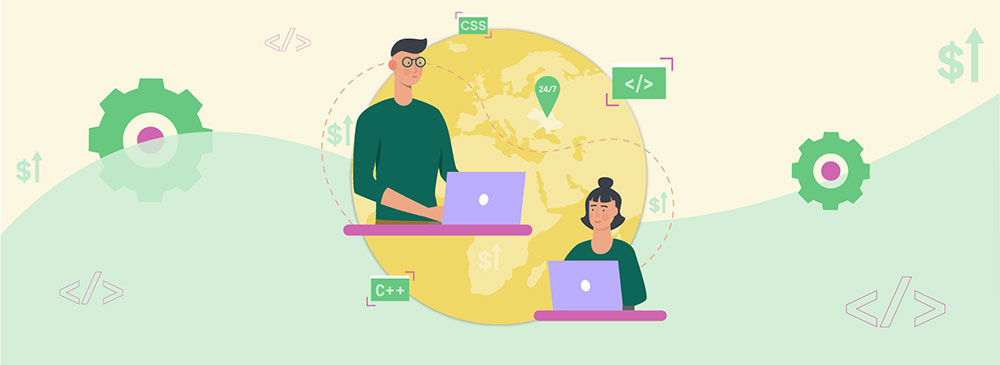How UX/UI Design Creates Winning Web Apps

In today’s fiercely competitive digital arena, where many web apps vie for user attention, crafting an exceptional user experience (UX) and user interface (UI) design has become paramount for success.
Gone are the days when a functional website sufficed; now, users expect seamless, delightful experiences catering to their needs and preferences. UX/UI design is the cornerstone of achieving these goals, shaping how users interact with and perceive a web app.
In this article, we’ll delve into the pivotal role of UX design for web apps and UI design for web apps. We will also explore the benefits of UX/UI web app design and illustrate its impact with real-world examples of award-winning apps that prioritize effective design principles.
The primary role of UX design for web apps
The central role of UX design for web apps is to ensure that users can effortlessly navigate through the interface, accomplish their goals, and enjoy a seamless experience. Central to this is the process of web app prototyping, which allows designers to create interactive mock-ups that simulate the user journey and gather feedback early in the development cycle.
By focusing on web app user experience, designers can optimize layouts, features, and interactions to enhance usability, accessibility, and overall satisfaction. Through iterative prototyping and user testing, UX designers refine designs to meet user needs and preferences.
The importance of UI design for web apps
Effective UI design is paramount for web apps, as it directly impacts the user experience. A well-crafted web app user interface enhances aesthetic appeal and ensures intuitive navigation, seamless interactions, and accessibility across devices.
By focusing on layout, typography, and color schemes, designers can create an environment that fosters user satisfaction and encourages repeated usage. Ultimately, a web app’s success hinges on its ability to deliver a user-friendly interface that streamlines tasks and fulfills the needs of its audience.
Benefits of UX/UI web app design
There are many benefits to effective UX/UI web app design, but let’s focus on the important ones.
1. Increased engagement
Engagement is about creating experiences that captivate users’ attention and encourage them to interact with the application. This could involve incorporating storytelling elements, such as compelling visuals and narratives, to create an emotional connection with users.
Interactive features like quizzes or polls can also enhance engagement by encouraging active participation and user feedback.
2. Higher conversion rates
Conversion optimization focuses on maximizing the number of users who take a desired action, such as making a purchase or filling out a form. This involves analyzing user behavior, identifying friction points in the conversion funnel, and optimizing key elements, such as calls-to-action and checkout processes, to reduce barriers to conversion.
A data-driven approach, combined with A/B testing and user feedback, helps identify the most effective strategies for improving conversion rates over time.
3. Brand consistency
Consistent branding creates a cohesive and unified experience across all touchpoints of the web application. This includes consistently using the brand’s visual elements, such as logos, colors, and typography, throughout the interface. By maintaining brand consistency, users develop a stronger association with the brand and are more likely to trust and engage with the application.
4. Faster load times
Optimizing UX/UI design can lead to faster load times, crucial for retaining users and reducing bounce rates. By streamlining the design, minimizing unnecessary elements, and optimizing images and code, web applications can load more quickly, providing users with a smoother and more responsive experience.
Real-world examples of how UX/UI design contributes to web apps success
1. Shopify
UX/UI design plays a crucial role in the success of Shopify as an e-commerce platform. The platform’s user-friendly interface, customizable storefronts, and intuitive admin panel empower businesses to create and manage online stores easily.
With features like integrated payment processing, inventory management, and marketing tools, Shopify simplifies the process of building and scaling e-commerce businesses, contributing to its widespread adoption among merchants of all sizes.
2. Adobe Creative Cloud
Adobe Creative Cloud places the user at the center of its design, providing intuitive tools and services for creative processes. The interface of applications like Photoshop, Illustrator, and InDesign is carefully crafted to simplify working with graphic projects and increase productivity. Additionally, Adobe Creative Cloud offers cloud services for file storage, shared access, and collaboration on projects, facilitating teamwork.
3. GitHub
GitHub offers a friendly interface for hosting, collaboration, and management of code repositories. Its intuitive navigation, version control capabilities, and collaboration tools foster the development of software projects. Additionally, GitHub features such as issues, pull requests, and discussions facilitate teamwork and contributions to open-source projects.
4. Amazon Web Services (AWS)
AWS provides an intuitive interface for managing cloud services, allowing users to configure and control resources easily. The AWS console offers a wide range of monitoring, security management, data analysis, and application development tools. The intuitive organization of the interface enables users to find and utilize the required services quickly.
Conclusion
Today’s competitive digital scene demands from web applications not only functionality but also exceptional user experience and intuitive and attractive interface design. The evolution of UX/UI design will continue, bringing new ideas and technologies to ease use and increase user satisfaction.
To create a successful web application, you should actively use UX/UI design methods, conduct user interaction testing, and constantly improve the design based on user feedback.
- Voice and Connect: Social Apps Like Clubhouse - May 16, 2024
- Understanding JavaScript Loops: A Beginner’s Guide - May 16, 2024
- Trending CSS-in-JS Libraries for Developers - May 16, 2024








